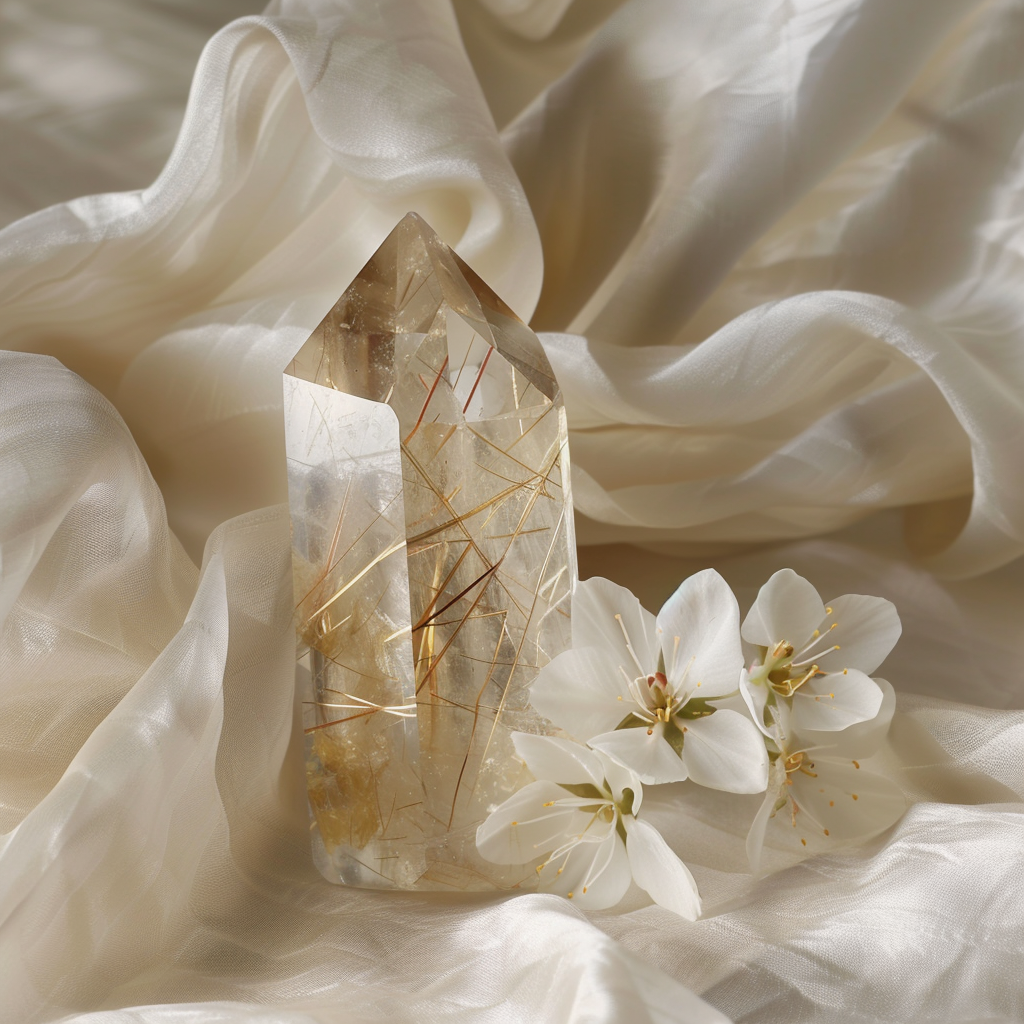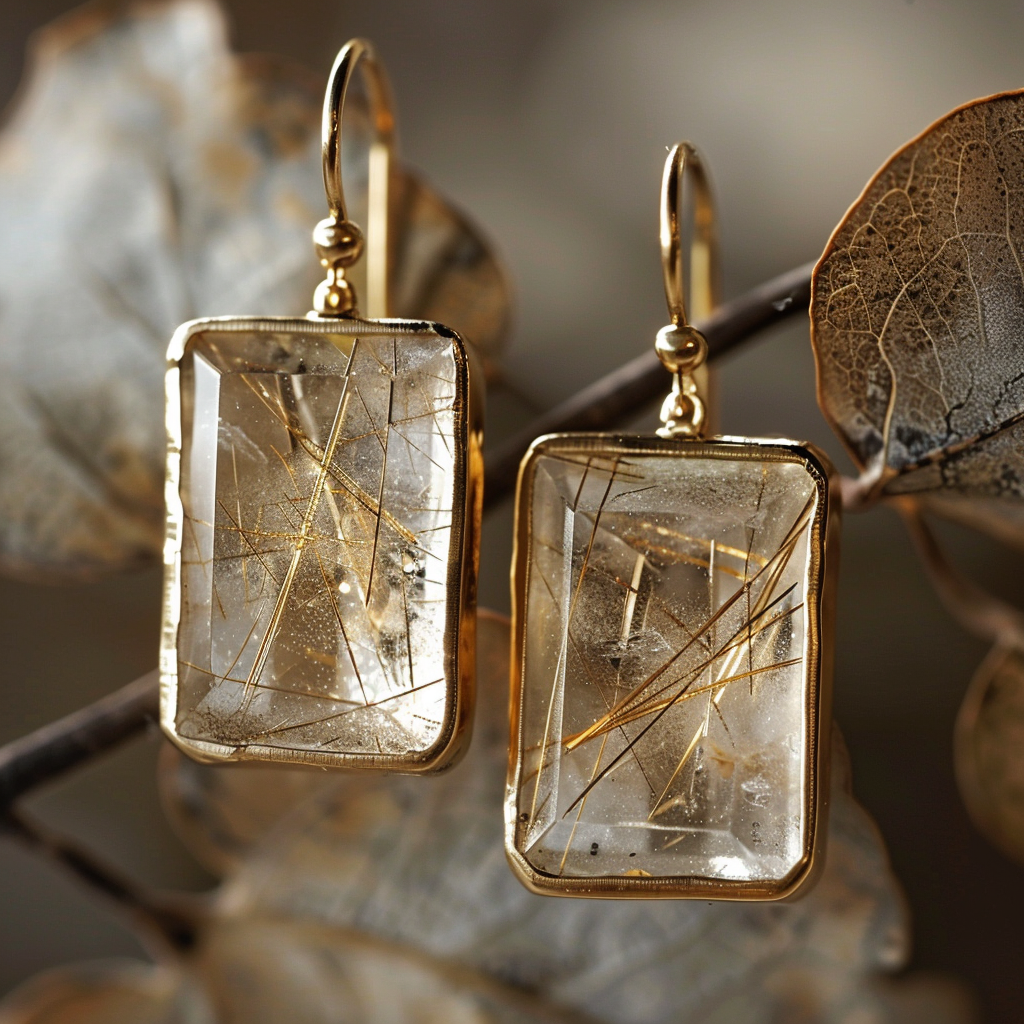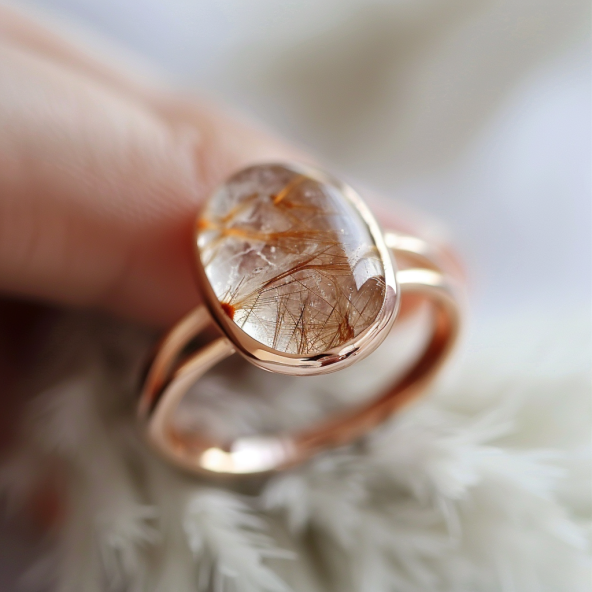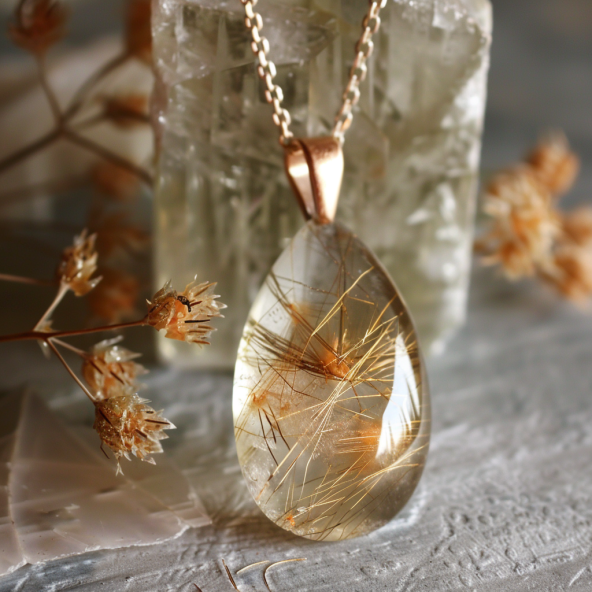FAQs on Rutilated Quartz Treatments
Rutilated Quartz is a unique gemstone featuring mesmerizing needle-like rutile inclusions. To enhance its beauty, it may undergo various treatments and enhancements. Below are some frequently asked questions (FAQs) about the treatments used for Rutilated Quartz, which will help you better understand what to expect when buying or caring for this captivating gemstone.

1. What treatments are commonly used on Rutilated Quartz?
The most common treatments used on Rutilated Quartz include:
- Heat Treatment: To enhance the color and clarity of the quartz.
- Irradiation: To enrich the color of the quartz, especially to create a smoky hue.
- Clarity Enhancement: Filling fractures with resin or glass to improve transparency.
- Coating: Applying a thin layer on the surface to enhance the luster or add a special effect.
2. Is heat-treated Rutilated Quartz less valuable?
Heat-treated Rutilated Quartz is generally less valuable than untreated stones, as natural specimens are often more sought-after by collectors. However, heat-treated stones are still desirable, especially for jewelry, as the treatment can enhance the gemstone’s overall visual appeal.
3. What is the purpose of irradiating Rutilated Quartz?
Irradiation is used to deepen the color of Rutilated Quartz, particularly to create smoky varieties. It can enhance the visual appeal by adding a richer, more intense color to the quartz, making it more desirable for certain jewelry applications.
4. How can I tell if my Rutilated Quartz has been treated?
Identifying treatments in Rutilated Quartz may require the expertise of a gemologist. However, there are some indicators you can look for:
- Heat Treatment: Enhanced clarity and vibrancy of color can be a sign of heat treatment.
- Irradiation: Stones with deep or unusual color may have been irradiated.
- Clarity Enhancement: Inclusions that seem “filled” or fractures that are less visible may indicate a clarity enhancement.
- Coating: A noticeable luster or iridescence that is not typical of natural Rutilated Quartz can suggest a surface coating.

5. Are treated Rutilated Quartz stones safe to wear?
Yes, treated Rutilated Quartz is generally safe to wear as jewelry. However, certain treatments, like clarity enhancements and coatings, may require extra care. It is advisable to avoid exposure to harsh chemicals, high heat, and sudden temperature changes to prevent damage.
6. How do I care for treated Rutilated Quartz?
To care for treated Rutilated Quartz:
- Avoid Harsh Chemicals: Clarity-enhanced and coated stones can be damaged by chemicals. Use mild soap and water for cleaning.
- Protect from Heat: Avoid exposing heat-treated stones to extreme temperatures.
- Store Carefully: Keep Rutilated Quartz jewelry separate from harder gemstones to prevent scratches, especially if it has undergone coating or clarity enhancement.

7. Are treatments on Rutilated Quartz permanent?
Most treatments on Rutilated Quartz are stable and permanent, such as heat treatment and irradiation. However, treatments like clarity enhancement and coating may require more careful handling, as they are more prone to damage and may wear off over time.
8. Should I buy treated or untreated Rutilated Quartz?
The choice between treated and untreated Rutilated Quartz depends on your personal preferences and budget. Untreated stones are generally more valuable and sought after by collectors, while treated stones may offer enhanced beauty at a more affordable price. It’s essential to ask for disclosure of any treatments before purchasing to ensure you’re making an informed decision.
9. How do treatments affect the value of Rutilated Quartz?
Treatments can affect the value of Rutilated Quartz significantly. Untreated stones, especially those with well-formed and attractive rutile inclusions, are generally considered more valuable. Treated stones are often less expensive, though they may have a more visually appealing appearance, making them popular for jewelry applications.
10. Is Rutilated Quartz usually treated?
Rutilated Quartz is not always treated; many stones are valued in their natural state, especially if they have desirable color, clarity, and well-formed rutile inclusions. However, treatments are sometimes applied to enhance the visual appeal, making the gemstone more attractive for commercial purposes.
Conclusion

Understanding the treatments and enhancements applied to Rutilated Quartz can help you make an informed purchase and properly care for your gemstone. If you have questions, exploring FAQs on Rutilated Quartz Treatments can provide valuable insights into the common methods used to enhance this gem’s appearance. While some treatments are widely accepted and stable, others may require special care. Whether you choose a natural or treated Rutilated Quartz, the beauty of this gemstone lies in its unique and captivating rutile inclusions that make every piece one-of-a-kind. Reviewing FAQs on Rutilated Quartz Treatments ensures you understand the processes involved and how to maintain your stone’s brilliance.
Explore Rutilated Quartz Treatments and Enhancements to discover methods that enhance its beauty and unique patterns.
